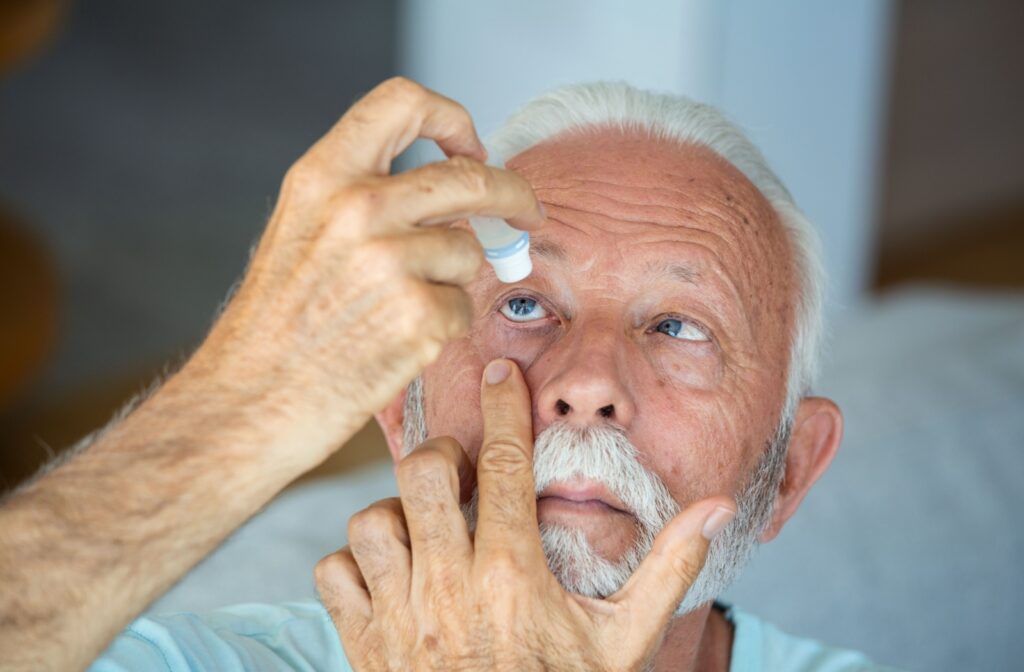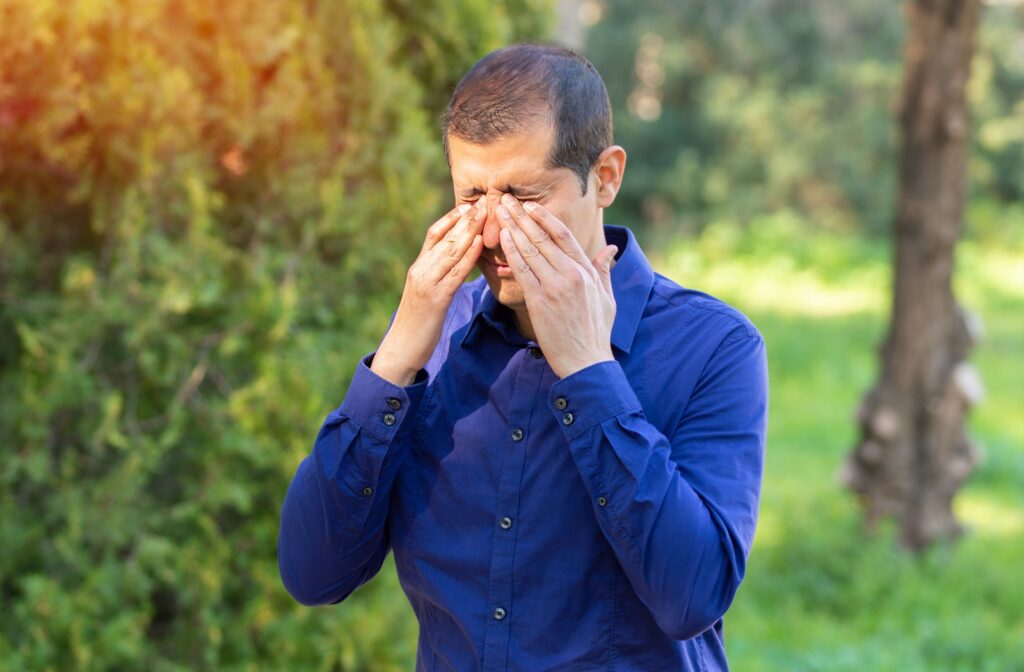Dry eyes can strike year-round, but many people notice their symptoms worsen once summer hits. Whether it’s the dry heat, air conditioning, or time spent outdoors, the season can take a toll on eye hydration and comfort. Dry eyes are common in the summer due to environmental triggers like heat, wind, and air conditioning.
By understanding what causes seasonal flare-ups and how to manage them, you can protect your eyes and enjoy the summer with fewer symptoms.
Why Does Summer Aggravate Dry Eye Disease?
Dry eye disease occurs when your eyes don’t produce enough tears or when the quality of your tears fails to keep your eyes adequately hydrated. During the summer, specific environmental factors can worsen the condition:
- Dry air: Hot and arid weather draws moisture away from your eyes, leaving them feeling gritty or irritated.
- Air conditioning: While a blessing on scorching days, air-conditioned spaces can strip the air of moisture, leading to eye dryness.
- Wind exposure: Whether you’re out hiking, on a beach, or simply enjoying a barbecue, summer breezes can accelerate tear evaporation.
- Sun exposure: Prolonged time in the sun can strain your eyes and potentially increase the evaporation of your tear film.
If untreated, dry eye disease can cause significant discomfort and potentially lead to complications like corneal damage.
How to Care for Dry Eye Disease During the Summer
Keeping your eyes healthy and hydrated throughout the summer is possible with a mix of preventative measures and targeted solutions. Here are some tips to get you started:
Shield Your Eyes with Sunglasses
Wear wraparound or polarized sunglasses to protect your eyes from wind, UV rays, and debris. Shielding your eyes reduces exposure to environmental triggers that exacerbate dry eye symptoms.
Stay Hydrated
Drinking plenty of water helps maintain tear production and overall eye health. Drink at least 8 to 10 glasses daily to keep your body and eyes hydrated.
Use a Humidifier
Indoor environments, especially ones with constant air conditioning, can quickly dry out your eyes. A humidifier adds moisture back into the air, helping prevent tear evaporation. Keep one in your bedroom or workspace to support your eye health while you sleep or work.
Limit Exposure to Wind
Summer activities like biking, boating, or driving with the windows down expose your eyes to direct airflow, which speeds up tear evaporation. Whenever possible, wear protective eyewear during these activities or position yourself away from fans or strong breezes when relaxing outdoors.
Take Frequent Breaks from Screens
Extended time looking at screens can decrease your blink rate, worsening dryness. To give your eyes a break, follow the 20-20-20 rule (looking at something 20 feet away for 20 seconds every 20 minutes).
Eat Eye-Friendly Foods
Consume foods rich in omega-3 fatty acids, like salmon or flaxseeds, which help reduce inflammation and support tear production.

Advanced Options for Dry Eye
If dry eye disease persists despite preventative care, various options beyond over-the-counter eye drops are available. West Valley Dry Eye offers several solutions tailored to the severity of the condition:
Low-Level Light Therapy (LLLT)
This option uses light to target glands around the eyes, helping reduce inflammation and restore tear production. LLLT is especially effective for those with meibomian gland dysfunction, a common cause of dry eye disease.
Intense Pulsed Light (IPL) Therapy
IPL therapy harnesses light to unclog glands and improve tear quality, and it is often a good choice for managing inflammation. IPL technology is clinically proven to provide long-term relief for dry eye sufferers.
TearCare
TearCare is another innovative approach that focuses on unclogging the oil-producing glands in your eyelids. This ensures that your tear film stays stable and hydrated for longer durations.
Punctal Plugs
For those with severe dry eye disease, punctal plugs can be inserted into the tear ducts to reduce tear drainage, allowing your natural tears to stay on your eyes longer.
When to See a Specialist
While many steps can be taken at home to alleviate symptoms, persistent or moderate-to-severe cases of dry eye disease require professional care. An eye doctor can help to diagnose the underlying causes of your symptoms and devise a management plan specific to your needs.
At West Valley Dry Eye, we specialize in advanced diagnostics and technologies to help you manage your symptoms effectively, even during the challenging summer months.
Make This Summer Dry Eye-Free
Dry eye disease doesn’t have to linger all season long. By understanding the triggers, adopting good eye care practices, and exploring advanced options, you can ensure your eyes stay comfortable and healthy this summer. At West Valley Dry Eye, we’re passionate about helping patients with the knowledge and therapies they need to reclaim their comfort. Relief is possible with the right combination of care and technology. Our dedicated team works with you to monitor your progress, make adjustments as needed, and provide ongoing support, so your eyes stay protected not just in summer, but all year long. Book an appointment online to start your path toward relief.


